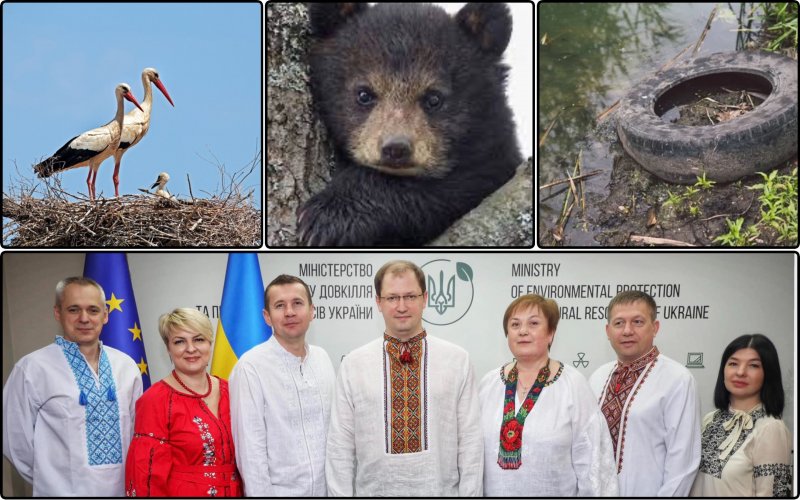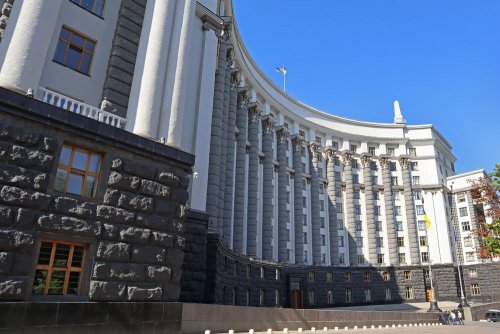The sustainability of our planet's ecosystems depends on the number of species that inhabit them. The more of them, the higher the possibilities of countering adverse conditions. According to research, regions with a high level of biodiversity have richer natural resources and are also able to cope with the consequences of natural disasters faster. That is why it is so important to preserve as many plant and animal species as possible within individual ecosystems and countries. With the start of a full-scale invasion, Ukraine faced unprecedented challenges. After all, whole ecosystems with their inhabitants were destroyed by hostilities.
Did it manage to attract more attention of the Ministry of Environment Protection and Natural Resources to the issue of flora and fauna protection – EcoPolitic found out.
State of flora and fauna of Ukraine
In Ukraine, there are almost 27,000 plant species, and over 45,000 animal species. Approximately 3,000 species of living organisms are included in various protected lists. As of 2021, 1,544 species are listed in the Red Book of Ukraine.
In general, biodiversity is affected by many factors of human activity: deforestation, planting monocultures, grazing, plowing land, draining swamps, irrigation, creation of reservoirs, pollution of the environment, fragmentation of ecosystems by transport highways, development of territory, use of subsoil. In addition, excessive use of valuable species of plants and animals, without taking into account their self-regenerating capabilities, is harmful to nature. A separate factor of influence is emergency situations, such as fires, floods, releases of toxic substances into the environment.
In order to protect particularly valuable species of plants and animals, as well as individual ecosystems from extinction, the territories are granted a protective status. Protected territories of different status in Ukraine occupy a little more than 6% of the area. These are 19 natural and 4 biosphere reserves, 49 national natural parks, as well as natural attractions, sanctuaries and other protected areas.
Conservation indicators in Ukraine are very low. For comparison, in Europe, the average percentage of conservation is 21%.
Risks are from all sides
It's no secret that hostilities have a negative impact on flora and fauna. Active shelling directly destroys greenery. In addition, as a result of explosions, heavy metals and sulfur enter the soil. Because of this, plants that managed to survive after shelling and fires from them lose opportunities for further growth and development. It also destroys the fauna of ecosystems and the movement of military equipment and the construction of defensive fortifications.
Small and large animals die from shelling. Large ones, however, are sometimes able to escape to safer areas, further from the line of direct contact. But constant explosions can disrupt their established rhythms of life, the process of reproduction of animals, which will gradually lead to the disappearance of populations.
Therefore, if even individual scraps of the ecosystem survived after hostilities, the normal development of plants and animals on them is practically impossible.
Combat operations are especially critical for protected areas, where the slightest human intervention is disastrous. Today, 10 national parks, 8 nature reserves and two biosphere reserves remain occupied.
As noted by the head of the President's Office Andriy Yermak, the Russian occupiers are massively turning these protected areas into hunting grounds, mines and parking lots for tanks. For example, the enemy recently boasted on social media photos of killed animals from the Askania-Nova biosphere reserve in the Kherson region.
The destruction of the Kakhovska HPP by the Russians also brought tragic consequences for the flora and fauna of the southern part of Ukraine. Plague of fish on the territory of the Kakhovsky Reservoir, death of animals and plants in flooded areas, subsequent death of living organisms in reservoirs and the Black Sea, due to leaching of toxic substances into the water (from cemeteries, cattle burial grounds, warehouses). And these are far from all the consequences that await us.
At the same time, the war is a significant, but far from the only, factor that destroys the flora and fauna of Ukraine. Some, especially enterprising and unscrupulous fellow citizens, in the absence of proper control, also "achieved success" in this matter.
For example, only in the last week the mass media reported about poachers-fishermen caught by law enforcement officers on Kryvyi Rih, Volyn and Rivne region. At the end of March, border guards of the Kyiv region caught the same dealers who managed to catch illegally fish for up to 900 thousand hryvnias.
Illegal fishing and illegal hunting are no less common. Such cases are also regularly detected in communities, and occasionally "black" hunters are caught even with red-listed animals. For example, in February in Poltava region, despite the ban on hunting, poachers a red-listed moose was shot.
Seasonal destruction of vegetation is still a kind of habit for some Ukrainians. We are talking about arson, which, despite bans and information campaigns, stubbornly continues to be practiced in rural areas. Pali completely destroy vegetation and small animals in the area of the pali. In addition, there is always a risk of uncontrolled spread of fire to large areas, which can also cause forest fires and fires in populated areas
Seasonal piles are prohibited by law. In 2020, fines for them were even increased 18 times. But it did not help, because the system of control over the implementation of this legislation was never formed. As a result, we have large-scale fires again this spring. For example, about this one reported at the State Emergency Service of Odesa at the end of March. Then the fire covered 3000 m2.
And what about the Ministry of Environment?
Perhaps some work of the specialized ministry in the direction of biodiversity protection slowed down as early as 2021. And the new team under the leadership of Ruslan Strilets could not (or did not even try?) to restore it.
From February 2021, a working group on the development of the Biodiversity Protection Strategy project until 2030 began operating at the Ministry of Environment. Both the responsible body and the involved experts reported on its meeting.
The goals of the strategy are very ambitious:
- ensure monitoring of the state of biodiversity in Ukraine;
- implement the concept of ecosystem services;
- to form a comprehensive approach to species conservation;
- fulfill international obligations to preserve biodiversity.
However, the third year has already passed, and the Strategy has not been approved, there is not even information about the progress of work on it.
The lack of biodiversity monitoring is especially critical at the moment. As a result, we do not have even an approximate idea of the number of most species of animals and plants in our territories. This does not allow to adequately plan the protection of species at the state level, to issue objective Red Books.
In the already mentioned year of 2021, the Verkhovna Rada failed the important draft law No. 4461 On the territories of the Emerald Network (a network of territories of special environmental importance). In total, 377 territories with an area of about 8 million hectares belong to the Emerald Network in Ukraine. This document was supposed to ensure the preservation of natural habitat types and species of natural fauna and flora in these territories.
Adoption of this draft law is not yet on the agenda, and its advocacy by the Ministry of Environment and the minister personally is practically non-existent.
We will once again mention the issue of piles with dryness. Every year, the Ministry of Environment conducts an information campaign to combat such cases, but it does not carry out systematic work in the direction of strengthening control of piles. Arsons that did not cause large-scale fires are still of little interest to regulatory authorities. DEI does not deal with this issue, and the police do not always respond. The emergency department is involved in the process when the fire turns into a large-scale fire. As a result, many Ukrainians are still hoping for luck and smoking weed, and all appeals and threats of fines pass them by.
Instead, the Ministry of Environment is actively promoting controversial draft laws that are not approved by the environmental protection community. For example, the Ministry advocated draft law No. 7689 "On Amendments to Certain Legislative Acts of Ukraine on Simplifying the Conditions of Doing Business (Deregulation)". This document provides for the cancellation of some permits in the field of protection and preservation of biodiversity, which are ineffective, exist only on paper and are not used in practice, as well as contradict the norms of the current legislation.
According to the Ministry, draft law No. 7689 will not weaken the protection of flora and fauna. However, specialized experts think differently. For example, in the EPL assured, that the Ministry of Environment is trying to cover up its inaction with the following steps:
"For such a reform of the permit system, a discussion should have been held with interested parties to determine the optimal ways of such deregulation, and not to cancel the permit documents that give the relevant ministry at least some idea about the volume of keeping wild animals in captivity, their reproduction, the volume of their removal from the natural environment environment. Without such control on the part of the Ministry of Environment in the form of permitting activities and the lack of control over compliance with the legislation on the protection of animals and plants by the State Environmental Inspection (moratorium, ineffectiveness, meager fines), the problems with the reduction of populations of especially valuable species will only deepen", summarized in the organization.
Despite all the risks to biodiversity in Ukraine, the Ministry is more interested in calculating losses and permitting procedures for business than in promoting the protection and development of flora and fauna. Apparently, it is impossible to "digitize" the protection of animal and plant life. What can motivate the department to transfer biodiversity to the rank of not declared but real priorities is a rhetorical question.





